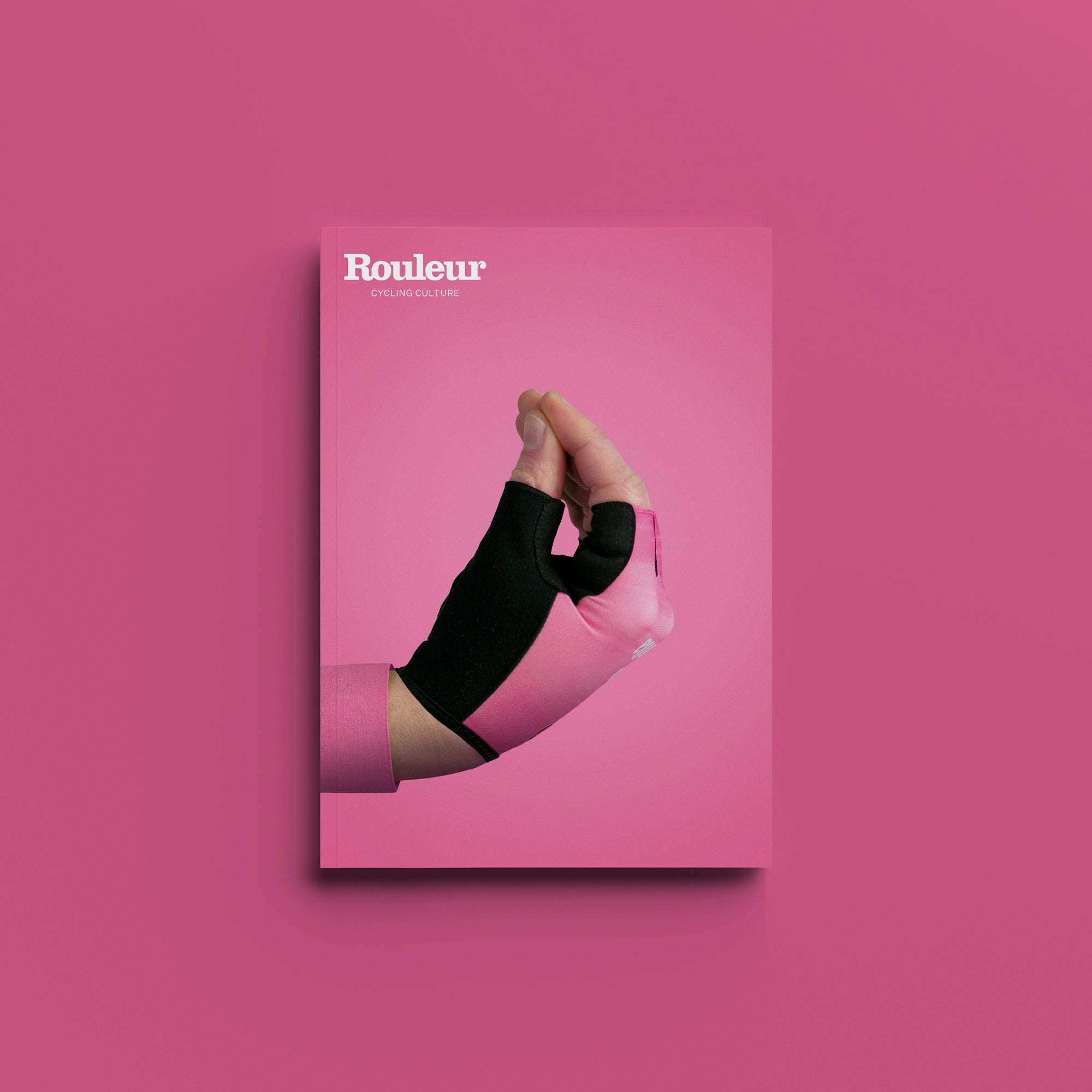Safety and professional cycling are often unhappy bedfellows. In the weeks leading up to the start of the 2025 road season, riders of the standing of Chris Froome and Wout van Aert were suggesting that restricting chainring size could curtail speeds and could reduce the spectre of danger. “The speeds needed to move a 60-tooth chainring can be above 80kph and you’re still pedalling,” Froome told La Gazzetta dello Sport earlier this year. “Maybe we need to put a limit on them. I’m not saying junior gears, but maybe 56 or 54 needs to be the limit, to keep the speeds down on descents.”
Oversized examples include the 62-toother Josh Tarling employed at the 2024 edition of Paris-Roubaix. It begs two key questions – at least for the purpose of this feature – how important is chainring size to speed (and safety)? And if it’s so damn important, what chainring choice is best for us amateur riders? Let’s see, as by dipping our toes into the safety debate, we lay the foundation for you to optimise your pedalling.
Chainrings not to blame
“You’ve asked me so I’ll tell you: the difference that gearing will make on sprint speed, even if restricted to 52-tooth, will be minimal,” says Adam Kerin, founder of Zero Friction Cycling. Australian outfit Zero Friction Cycling is world renowned for in-house and field testing of chains and chain lubricants. “Is a sprint safer at 72kph vs 74kph? They’re both dangerous. The fastest sprints are often course-dependent. If the sprint finish is on a 2% decline, and with a tailwind, then the speeds for the sprint are pretty scary compared to if the sprint was finishing up a 2% incline. Still, if the finish is going to be very fast due to the nature of the parcours, I think the sprinters having something to push against at very high speed with higher gearing may actually lend more control versus madly spinning out on smaller gearing.”
Kerin suggests chainrings are the wrong place to look in search of scrubbing speed. Instead, he says in modern racing you’d need to blunt the slipstreaming. “Meaningful differences to the peloton’s speed can really only come from aero. Enforcing every cyclist to run a bulky camera and data-capture device would add 30 watts of drag at 40kph. It would also give spectators something great in return.”
Whether frame and wheel manufacturers will be happy for their extensive and expensive R&D to be undone by an intentional drag-inducing product remains to be seen. Failing that, Kerin directs the UCI toward lower-hanging fruit.
 Josh Tarling deployed a 62-tooth chainring for last year's Paris-Roubaix (Luc Claessen/Getty Images)
Josh Tarling deployed a 62-tooth chainring for last year's Paris-Roubaix (Luc Claessen/Getty Images)
“There continues to be an astounding number of very unsafe race finishes, poor spectator controls [and sometimes traffic as per the recent edition of Etoile de Bessèges where teams quit after cars got onto the course] and sections including unsafe road conditions with insufficient or no warnings,” he says. “For instance, a high-speed descent that goes into a corner with a tightening apex. These must be flagged up on the road to protect the rider. Bringing it back to gearing, if a rider’s rolling down a hill at 80kph into a tricky corner with harsh consequences for missing a braking point, lower gearing will not help!”
Efficiency equals speed… but only a little
The chainring discussion was arguably exaggerated because it became an off-season, slow-news talking point, but there is actual science behind the sensational headlines that claim larger chainrings are more mechanically efficient and faster.
“As you increase chainring size, more often than not you end up with a straighter chain line, which reduces the tension in the chain,” says Dan Bigham, head of engineering at Red Bull-Bora-Hansgrohe. “The number of chainring teeth plays a part, too. If you had, say, a 60-tooth chainring, that’s a 60-side shape. That means there’s around a 6° articulation between teeth [360° of a circle divided by 60]. If you had a 52-tooth chainring, that’s around a 7° articulation between teeth. The greater the articulation angle, the less efficient the drivetrain.
“On the flipside, a bigger chainring equals a higher chain speed, which is a bad thing for efficiency,” Bigham adds. “That’s because chain speed is linearly related to cadence and chainring size, so in this instance, double the chainring size for the same cadence results in double the chain speed. But ultimately, what you gain with smaller articulation angle and lower chain tension outweighs the loss from a higher chain speed.”
Does that mean Bigham argues that chainring size should be restricted? No, because, like Kerin, he stresses the mechanical efficiency changes are minor. As does SRAM. “All else being equal and comparing the same gear ratios, only a marginal improvement of the order of a few tenths of a per cent in absolute efficiency of the drivetrain may be achieved for a substantial increase in both ring and cog size,” says SRAM road drivetrain chief engineer Anthony Medaglia. “Using a road drivetrain as an example, a 10% increase in ring and cog size might achieve 0.2% in a drivetrain that already provides around 97% efficiency.
“When the effect of this is attributed to speed, one has to look two decimal places over (in kph) to observe the small effect, which equates to under three seconds per hour in a flat terrain scenario. This would only be realised under ideal conditions of pedalling the entire time at the same power, never coasting or changing speed. It also ignores any negative effect from added mass or aerodynamic drag that the larger components may incur.”
Your perfect chainring? It’s down to…
In short, chainring size isn’t going to make professional cycling perceptibly safer. But what is the impact on you, the recreational rider? We can see that going large is good for efficiency, even if marginal. Less friction also means going large could pay off financially as reduced wear and tear means greater drivetrain longevity. Which is all well and good, you might ask, but that efficiency’s wiped out if the ring’s so large that your thigh muscles are waving the white flag before you’ve reached the first climb of the day. So, which chainring is ideal for you as an amateur rider? That, says Bigham, comes down to how fast you spin your legs.

Choosing the right chainring will depend on your most efficient cadence (Alessandra Bucci)
“You must be able to ride at the cadence you want to ride at for the speed range you want to ride at, both at the lowest and highest end,” he says. So, if you’re climbing a steep 10% gradient and feel you ride best at 90rpm, do you have the gearing that enables you to do that? At the other end of the speed spectrum, do you have the gearing to ride at your preferred cadence during a fast section like a downhill stretch the [Red Bull] guys were undertaking in team time trial formation recently in Valencia?
“You’ve also got the closeness of the gear jumps, which is dictated by the difference between the teeth, so if you have a tightly packed cassette, like some of the old-school ones like an 11-21, you’d have a one-tooth difference per shift, so that’s really small, whereas nowadays we have 10-36 on the road and 10-50 in the gravel world, so huge cadence jumps. Some riders don’t tolerate those changes very well, which is where physiology comes into the cadence optimisation side of things. Can you tolerate riding up to say five or six rpm away from your chosen optimal cadence because you might want to ride at 90, but in one gear you can only ride at 95 and the other gear you can only ride at 85?”
In short, which is the perfect cadence for you to optimise speed and delay fatigue? Well, it depends on whether you can better tolerate the neuromuscular load or the cardiovascular load? “Less well-trained cyclists are more efficient at higher torques and lower foot speed,” says Bigham. That means they may require less oxygen, but it does create more neuromuscular fatigue and an increased reliance on fast-twitch muscle fibres. High cadence, however, requires less muscle activation but it usually comes at a higher energy cost at lower power outputs. Which is fine for the elites as they can generate high cadence and lower power output fuelled by fats. Many amateurs, however, could burn through their carb stores at many gear ratios if attempting high cadence.
“Ultimately, if you’re a higher-cadence rider like Chris Froome, you’re loading the cardiovascular system more, which doesn’t fatigue anywhere near as quick as the neuromuscular,” says Bigham.
Research suggests that trained cyclists tend to be more efficient at higher cadences of around 80 to 100rpm when generating higher power outputs, while moderately trained cyclists often perform at their peak at 60rpm. The ideal is that you have a cadence range to tap into for the myriad cycling scenarios that you’ll encounter on a single ride, whether it’s a climb, headwind, tailwind or leaving the traffic light for dead. But key, says Bigham, is to improve your torque.
“It’s commonplace in WorldTour cycling to do low-cadence sessions to crank up torque. The coach might prescribe the effort so that they’ll ride at 40rpm with a torque at about 100Nm, which might equate to riding at a threshold of 380 to 400 watts, so really grinding out the power.
“You can then go the other way with very high cadence drills, which is proven to be more efficient with the elite rider but is less common nowadays. It’s something we were taught at British Cycling. The junior riders had a limited size gear, so they were ‘forced’ to pedal faster and, in the long run, more efficiently. You don’t have any choice but to generate a high cadence for high speeds on the track as you obviously only have the one fixed gear.”
Natural selection
Where does that leave us? Chainring and cassette size is important but more for optimising your speed than safety. Yes, a larger chainring is more efficient than a smaller one, but that’s nominal; in fact, all three of our experts agree that chain lubricant is much more important for drivetrain efficiency than chainring size.
“Most lubricants are OK but stay away from dry lubes,” says Bigham. “It’s not really a lubricant; it’s more a friction modifier and you don’t have a film coating within the internal components of the chain. If you’re running a new chain or new bike, I’d also recommend cleaning the chain straight away as that just tends to be packing grease. Replace with an oil, a wax, a drip. Your choice but not dry.”
Dig deep into the literature and, it seems, your optimum cadence is arguably the one that you ride at, especially if you’re an experienced rider. It might not be optimum for your riding mate but it’s the one that by virtue or design is physiologically efficient for you. Yes, you can adapt your cadence range for greater versatility and crank up torque with drills, but ultimately your best is down to fat-burning capabilities, muscularity, age, annual miles racked up… Which leaves you where? What should you take away from this chainring deep dive? If you do nothing else, clean and lube your chain regularly. And not with the dry stuff!
Cover image by Tornanti































